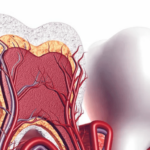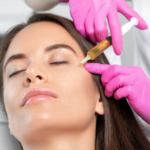
The first thing that people notice about you is usually your smile, but if you’re self-conscious about your gums, you might be reluctant to flash those sparkling whites. Your gums could seem uneven, recede, or become irritated because of gum disease, gum recession, or other problems. Thankfully, gum reconstruction can assist in regaining your smile and self-assurance. We’ll go over all you need to know about the operation, the recuperation, and the advantages in our comprehensive guide to gum repair.
How Does Gum Reconstruction Work?
Gum reconstruction, sometimes referred to as gum grafting, is a surgical technique that entails grafting gum tissue onto your gums from another area of your mouth or from a donor source. Gum recession, gum disease, and other problems affecting the gum tissue can all be treated with this surgery. Your gum line can be repaired with gum reconstruction, which will also enhance the overall look of your smile.
Gum Reconstruction Techniques
Depending on your needs, your dentist or periodontist may suggest one of many different types of gum repair treatments. Gum grafting and the pinhole surgical procedure are the two most common methods of gum reconstruction.
Gum grafting is the process of attaching tissue to your gums from a donor source or another area of your mouth. Gum recession is frequently treated with this technique, which can also make your smile seem better.
Traditional Gum Grafting can be substituted with the less invasive pinhole surgical approach. During this process, a tiny hole is made in the gum tissue, and the gum tissue is then carefully moved into the proper place using specialized equipment. Compared to conventional gum grafting, the pinhole approach often requires a shorter recovery period and causes less discomfort.
The procedure of Gum Reconstruction
Your dentist or periodontist will use a local anesthetic to numb the region before beginning the treatment. When the gums need to be healed, a little piece of tissue from the donor site or the roof of your mouth will be attached there. Sutures and a bandage for protection are used to hold the tissue in place.
Depending on how much gum regeneration is required, the surgery typically lasts one to two hours. The majority of patients have little to no discomfort during the operation, and they are able to resume their regular activities within a few days.
Aftercare for Gum Reconstruction
It’s crucial to adhere to your dentist’s recommendations for appropriate aftercare following the gum-rebuilding treatment. This might comprise:
- Avoiding meals that are tough, crunchy, or spicy for a few days following the surgery.
- Gentle brushing methods and a soft-bristled toothbrush to avoid causing gum irritation.
- Maintaining the region clean by using a saltwater rinse or prescription mouthwash.
- Avoid using tobacco products or smoking, since these might hinder the healing process.
- Keeping track of your development and ensuring adequate healing by attending follow-up appointments with your dentist.
Conclusion:
Finally, gum restoration is a successful dental operation that may help your gum tissue heal and enhance the look of your smile. The operation can provide long-lasting improvements and enhance your general oral health with the right examination, planning, and aftercare. You should consult a trained dentist for treatment if you have gum recession or other dental problems. Gum restoration is just one of the many dental procedures we do at Dentaverse to assist patients attain excellent oral health. Make an appointment with us right now to arrange a consultation and begin the journey to a happier, healthier smile.




